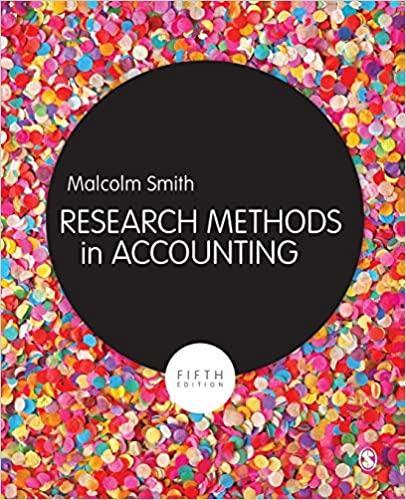Question 1.125.marks) Kake Kafe is the producer of scrumptious coffee cakes. The entity produces 1,000 coffee cakes per month and supplies them to their other stores island wide. The coffee that is used as raw material is purchased at Blue Mountain Coffee Company at a cost of $500 per lb. The entity uses 1,350 lbs. of coffee per month. The storage cost is estimated to be 18% of the cost per lb. and the order cost is $250 per order. Blue Mountain Coffee Company has offered to provide the following discounts: 3% for orders of 500 - 799 lbs. 7% for orders of 800 - 999 lbs. 10% for orders of 1000 and above. Required: (a) Calculate the Economic Order Quantity (3 marks) (b) Calculate the total cost based on the Economic Order Quantity (4 marks) (e) Calculate the total cost for each individual alternate order quantities. (12 marks) (d) Which order quantity is considered the optimal order quantity and why? (2 marks) (e) While the EOQ model can be useful for determining optimal order size, the assumptions may not be realistic. List four of these assumptions (4 marks) Question 2 (25 marks) Risqu Inc. produces liquid soap and uses a process costing system. The management accountant has assembled the following information for January 2021: Beginning Work-in-Process Inventory 40,000 units (25% complete as to conversion) Started during the period 480,000 units Ending Work-in-Process Inventory 120,000 units (30% complete as to conversion) Beginning inventory costs are: Materials S720,000 Direct Labour $315,600 Factory Overheads $1,262,400 Costs incurred during the month are: Materials $2,400,000 Direct Labour $3,450,600 Factory Overhead $8,051,400 All materials are added at the start of production and all completed products are transferred out. (a) Use the weighted average cost flow assumption to determine the equivalent unit cost, work in progress and prepare the process account for the entity (17 marks) (b) Using the FIFO cost flow assumption: determine the equivalent unit cost, work in progress and value output for the entity, (8 marks) Nil Question 3 (32 marks) The producers of body lotions manufacture three different types. One with aloe vera, the other cocoa butter and another with mint leaves. Production for these products passes through two consecutive processes: Forming and Assembly. The output of the forming process becomes the input for assembly after which it is prepared for the external market. The following data is applicable to the company for the two processes for the year ended 31 December 2021 Forming Assembly Direct Material (18,750 units) S 894,750 Conversion costs S1.125.000 S2,338.000 Normal loss 4% 6% Scrap value of normal loss S3 $20 Output 17,500 Aloe vera 8,125 Cocoa butter: 6,500 Mint leaf 1,625 The selling price per unit for each item are as follows: S150, 200, and S450 for aloe vera, cocoa butter and mint leaves respectively. Required: a) Calculate the cost per unit and the process account for Forming (8 marks) (b) Prepare the cost per unit and the process account for Assembly using the relative sales value method (16 marks) (e) Prepare the cost per unit and the process account for Assembly using the units to produce method (8 marks) Question 4 (20 marks) ACME Inc. produces sunglasses at its factory. The following information relates to the production of the sunglasses for the period ending 30 June 2021. Production Sales (Units) (Units) Budgeted 75,000 72.500 Actual 80,000 77,500 Budgeted Actual Fixed production cost $750,000 $781.250 Fixed selling overhead S562,500 5562,500 The fixed production overhead was absorbed at a pre-determined rate per unit produced. A pair of sunglasses was sold for $450. At the beginning of May 2020, there was opening inventory of 4,375 units valued at $262.500; this includes fixed production overhead of 543,750. Required: (a) Prepare a marginal costing income statement for the company. (4 marks) b) Prepare an absorption costing income statement for the company (11 marks) (c) Reconcile the income under both statements. (2 marks) (d) Distinguish between variable costing and absorption costing (3 marks) a Question 5 (31 marks) Below are the actual overhead and actual activities for the three (3) production departments at General's Ltd for the year ended August 2018. B Indirect Labour S3.375,000 S 450.000 S 675.000 Indirect Materials S1,125,000 S 675,000 $1,575,000 Other Expenses $2,250,000 $3,375,000 $2,812,500 Machine hours 225,000 450.000 675,000 Labour hours 1,125,000 225.000 562,500 B Prior to the end of the period, the production manager provided the following budgeted information for each of the departments. The entity also has two service departments: Stores and Maintenance. The following immediately below are the budgeted data for the same period: Maintenance Stores Indirect Labour $2,250,000 $1,687,500 $2,812,500 S 900.000 $ 1.125,000 Indirect Materials S 675,000 S 562,500 $1,687,500 $ 1,350,000 S 1.575,000 Other Expenses $2,700,000 $2,250,000 $1,125,000 $450,000 S 1,800,000 Labour hours 1,350,000 180,000 450.000 Machine hours 225.000 337,500 562,500 Overhead is absorbed based on how intensive the individual departments are considered. It has been estimated that service department usage is as follows: A B Maintenance Stores 20% 20% 40% 20% 20% Maintenance Stores 50% 20% 10% Required: (a) Prepare a schedule to apportion the notional service cost to production and the total overheads for the production departments after apportionment. Hint: use simultaneous equations to derive the notional values. (13 marks) (b) Calculate the overhead absorbed in each department. (12 marks) (c) Calculate the under over absorbed overheads for each department and the entity in total. (6 marks) (d) What are the two main factors that give rise to over/under absorption of overheads? (2 marks)









